Startling Measures
A researcher was going through data that had been collected from well-below the ice of Antarctica. Once these measurements were placed with the corresponding details, this data revealed a startling discovery. It painted a terrible picture for what is going on with climate change.

Startling Measures
A Mysterious Continent
Antarctica is two times bigger than the size of Australia. Due to this, it probably doesn’t come as a surprise that it’s known as being the continent of secrets. The vast size of this continent means that there are so many secrets consuming the land.

A Mysterious Continent
A Team of Researchers
In 2014, a team of researchers came together from a variety of institutions that combined cutting-edge technology and physics to develop a new map of this vast continent. After five years of conducting this research, the startling results were released.

A Team Of Researchers
The Impact of Climate Change
Many people are concerned about what’s going to happen if the ice sheets in Antarctica melt. This comes from the global temperatures continually increasing. As a means of accurately predicting the future, scientists need to gather as much information as possible.

The Impact Of Climate Change
The Latest Development
It’s no secret that Antarctica remains the least-visited continent in the world. Due to this, it’s still a mystery to the majority of the world. Only a mere handful of tourists and researchers visit this continent each year. However, this frozen region is quickly disappearing.

The Latest Development
Surrounding the South Pole
This frozen continent is situated in the far southern hemisphere and surrounds the South Pole. In addition to this, Antarctica is almost entirely covered in ice. Unsurprisingly, this challenging environment is difficult for humans to survive, but intrepid animals call this place home.

Surrounding The South Pole
No Indigenous Population
Other than the flipper-ed animals living on the continent, there isn’t an indigenous population in the whole of Antarctica. Additionally, humans didn’t even have knowledge about this continent until the 1770s. Since its initial discovery, many researchers have made attempts at uncovering its secrets.

No Indigenous Population
Previous Technology
When previously conducting research, specialists used radar technology to map out terrain that can be found beneath the continent’s ice sheets. This method uses microwave radiation pulses to build-up an accurate image. However, this technology is met with many limitations.

Previous Technology
The Limitations
One of the most well-known limitations of using such technology is that it cannot accurately map out the continent’s terrain in the deepest parts of the region. This is because the pulses bounce off trenches or valleys without having the ability to touch the bottom.

The Limitations
The Problem
This limitation poses a problem for researchers as these experts cannot determine what exactly is beneath the surface of Antarctica. However, this all changed in December 2019 when a team made up of individuals from various institutions provided new information to the world.

The Problem
BedMachine Antarctica
This project was nicknamed BedMachine Antarctica and was created to develop Antarctica’s most accurate map that contained the terrain found beneath the continent. The research used included records from 19 different institutions that dated back all the way to 1967.

BedMachine Antarctica
The Starting Point
The collection of information from these institutions acted as the starting point of this project. From this, these experts were able to begin constructing the most accurate map of Antarctica. However, there were massive areas that remained uncharted, which was the real challenge for these researchers.

The Starting Point
A New Method
The remaining uncharted regions making up Antarctica’s map needed a different approach to what was currently being used. That’s when these scientists decided to use the mass conservation method to fill these gaps. This method is a law in physics.

A New Method
Mass Conservation
By these researchers following the law of mass conservation, the team successfully established how much ice is present in the sunken valleys of the continent. This process is said to have involved satellite data, which determined precisely how much ice was moving across Antarctica.

Mass Conservation
The Final Result
After the researchers knew how much matter was entering and exiting the continent’s valleys and at what speed this was happening, these experts were able to collect all the data they needed. This information was fundamental in filling in the gaps of the map.
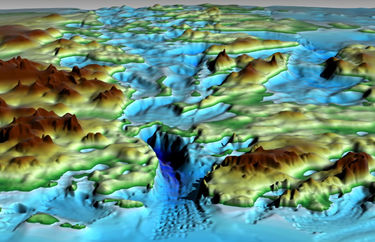
The Final Result
Putting It Together
By the researchers establishing the ice volume in Antarctica’s various valleys, they were able to learn more about the systems of the frozen continent. Due to this, these scientists were armed with all the information they needed even to predict the precise shape and contours of the valley floor.

Putting It Together
The Big Reveal
The results of this study were finally made public in December 2019. It turned out that the researchers had achieved their objective of developing the most detailed map of Antarctica. However, nobody expected what this astounding load of work would ultimately uncover.
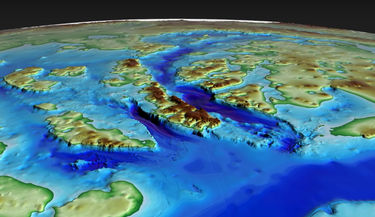
The Big Reveal
A Record-Breaking Canyon
From the map that the team had created, a record-breaking canyon could be seen hidden well below Antarctica’s surface. The frozen continent that collides with the Southern Ocean situated in East Antarctica is home to the Denman Glacier.

A Record Breaking Canyon
The Denman Glacier
The explorers in 1912 first discovered a massive glacier in the desolate and remote terrain and dubbed it as the Denman Glacier, which stretches for more than 12 miles. However, the most exciting thing about this glacier is the canyon that lies underneath it.

The Denman Glacier
The Deepest Point on the Surface of the World
It gets even better. This canyon is known to reach 11,500 feet below sea level. From these records, it makes this canyon the deepest point on the entire face of the world. Before this discovery, the Dead Sea’s edge was the deepest point at 1,355 feet below sea level.
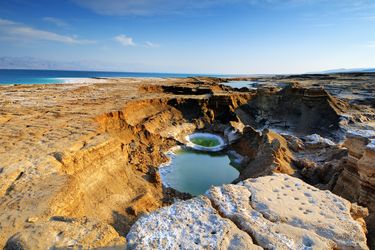
The Deepest Point On The Surface Of The World
Not the Deepest Point on Earth
Even though this canyon is the deepest point on the world’s surface, it isn’t the deepest point on the planet. The famous Mariana Trench takes this title as it plunges almost seven miles downwards towards the Earth’s core.

Not The Deepest Point On Earth
Misconceptions
Some individuals have pointed out that there are other valleys on Earth that are deeper than the Denman Glacier. Such examples include the Grand Canyon and the Yarlung Tsangpo. However, records clearly show that this glacier is the real record-breaker.

Misconceptions
Experts Speak
One geologist has gone on to state that the Denman Glacier is classified as the deepest canyon on land, which is commonly confused with trenches in the ocean. Until the developments made from the BedMachine Project, all previous efforts to map this valley failed.

Experts Speak
Entrenched
Scientists have gone on to say that the trough is so entrenched that you’re able to get side-echoes from the walls of this valley. It’s for this reason that it’s almost impossible to detect the reflection from the actual bed. However, these researchers have been able to catch a glimpse of the glory this canyon has.

Entrenched
Earning a Place in the History Books
The work conducted by the BedMachine Project has earned a place in the history books for those who played a role in this discovery. Not only have these researchers identified the lowest point on the Earth’s face. They have also offered a greater understanding.

Earning A Place In The History Books
Understanding the Impact of Climate Change
The information gathered by the BedMachine Project has also paved the way to better understanding the way that climate change is affected the world. The landscapes that slope inland on the continent have the ability to speed up the process of global warming.

Understanding the Impact of Climate Change
Not All Bad News
Even though this information can sound incredibly alarming, it isn’t all bad news. This is because there are also particular geographical features that have the apparent opposite effect on our planet. There are many examples of this, such as the Transantarctic Mountains.

Not All Bad News
The Transantarctic Mountains
There are a number of glaciers that have developed on the eastern coast of Antarctica. At this moment, these are currently flowing into the Ross Sea. This is where ice stems imitate this movement. However, concern was previously expressed about the impact of these sheets melting.

The Transantarctic Mountains
Previous Data
In accordance with previous models, many people predicted that these ice sheets melting would speed up the rate that the glaciers flow into the Ross Sea. However, data revealed by the BedMachine Project challenged these ideas. This study showed that high ridge runs underneath the ice.

Previous Data
What It Shows
This ridge showed in the research collected that it could slow down the rate that these glaciers located in the Transantarctic Mountains drain into the ocean. Due to this, the melting of ice sheets into the Ross Sea might not be as problematic as once believed.

What It Shows
The Problem
Right now, everything is okay with the Ross Sea ice shelf. However, what if something caused a collapse? Experts have gone on to state that the Ross Sea isn’t the variant that could threaten East Antarctica. However, this doesn’t mean the news is entirely satisfactory.

The Problem
The Real Issue
On the opposing side of Antarctica, there is a massive glacier that’s known to be the same size as the UK. This flows into the Amundsen Sea, and it’s seen as one of the quickest-moving shelves of ice. However, the research conducted shows that this mass could travel even faster in the coming years.
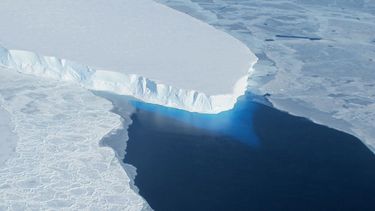
The Real Issue
The Thwaites Glacier
This study has gone on to reveal that the Thwaites Glacier slopes inland, which is the exact terrain that speeds up the retreat. Not to mention, the land underneath the glacier is almost entirely devoid of any ridges that could slow it down.

The Thwaites Glacier
Adding Fuel to the Fire
However, it doesn’t stop there. There are only two ridges found in the surrounding area. These ridges are almost 30 miles away from the current location of the Thwaites Glacier. Thus, there’s no stopping this mass after the retreating ice passes these points.

Adding Fuel To The Fire
Causing a Problem
The sheer size of this glacier can cause a huge problem. One excellent analogy of this situation has been provided by Dr. Emma Smith, which states that the process is quite similar to how dense liquid travels across a surface.

Causing A Problem
Implementing the Analogy
Dr. Emma Smith continues by saying that you should imagine pouring a bunch of treacle on to a flat surface. After this, you should watch how this liquid flows outward. Now, pour the identical treacle on a surface with bumps and lumps. This provides a different reaction.

Implementing The Analogy
The End Product
The ultimate observation would be that the way this treacle spreads out is different in both scenarios. This is because, like bumps and lumps, ridges aid in slowing down the movements that this liquid flows. However, this isn’t the only region that was exposed by the team.

The End Product
Adding to the List
The BedMachine Project has gone on to learn about more terrain underneath the Recovery Glacier located in northwest Antarctica. This area has an incredibly fast flowing rate that can pose a problem, especially due to the absence of many ridges.

Adding To The List
Climate Change
Climate change is heavily impacting the entire world, even a continent that doesn’t have any humans. This is a scary revelation, as scientists are beginning to understand that our actions are having huge impacts in places further than we are living.

Climate Change
Out of this World
This revelation has caused one major question. If we’re seeing a change in Antarctica from climate change, who knows the impact we’re having in places that are out of this world. We might not be destroying our world, we might be destroying things that we don’t even fully understand yet.
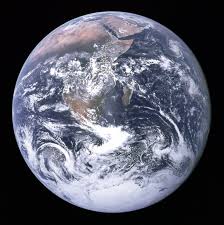
Out Of This World




